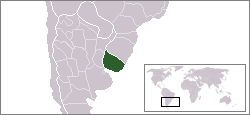This article has multiple issues. Please help improve it or discuss these issues on the talk page . (Learn how and when to remove these messages)
|

Uruguay and the World Bank have been working together for a long time. This is because they both mutually benefit. [1]
Contents
- Current state of Uruguay
- WBG projects in Uruguay
- IBRD projects
- IFC projects
- MIGA projects
- Specific projects
- FMD Emergency Recovery Project
- Uruguay Water
- Energy efficiency
- Results
- References
From the WBG, Uruguay asks for the development of finance services and innovative knowledge, the use of integrated services with the participation of the World Bank, the International Finance Corporation (IFC) and the Multilateral Investment Guarantee Agency (MIGA) and the publication of Uruguayan development experiences in web sites where the WBG can serve as a platform for the dissemination of successful reforms. [1]
On the other hand, working with Uruguay is interesting for the world bank, because it is a country that is interested in increasing the productivity and insertion in the international sphere plus they are both interested in finding innovative development solution to assist the country and create positive externalities. [1] [2]
